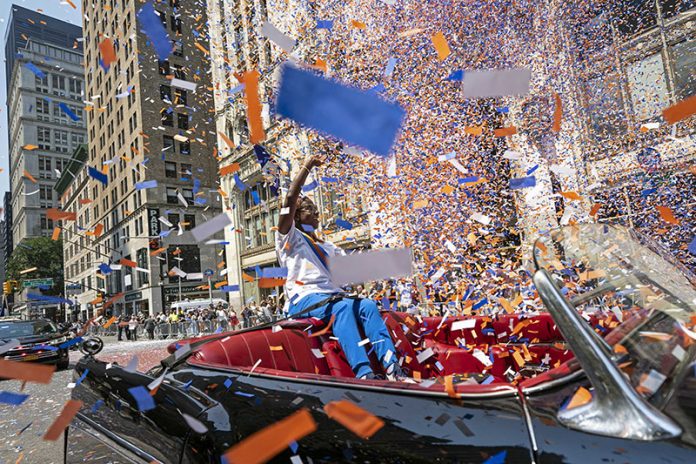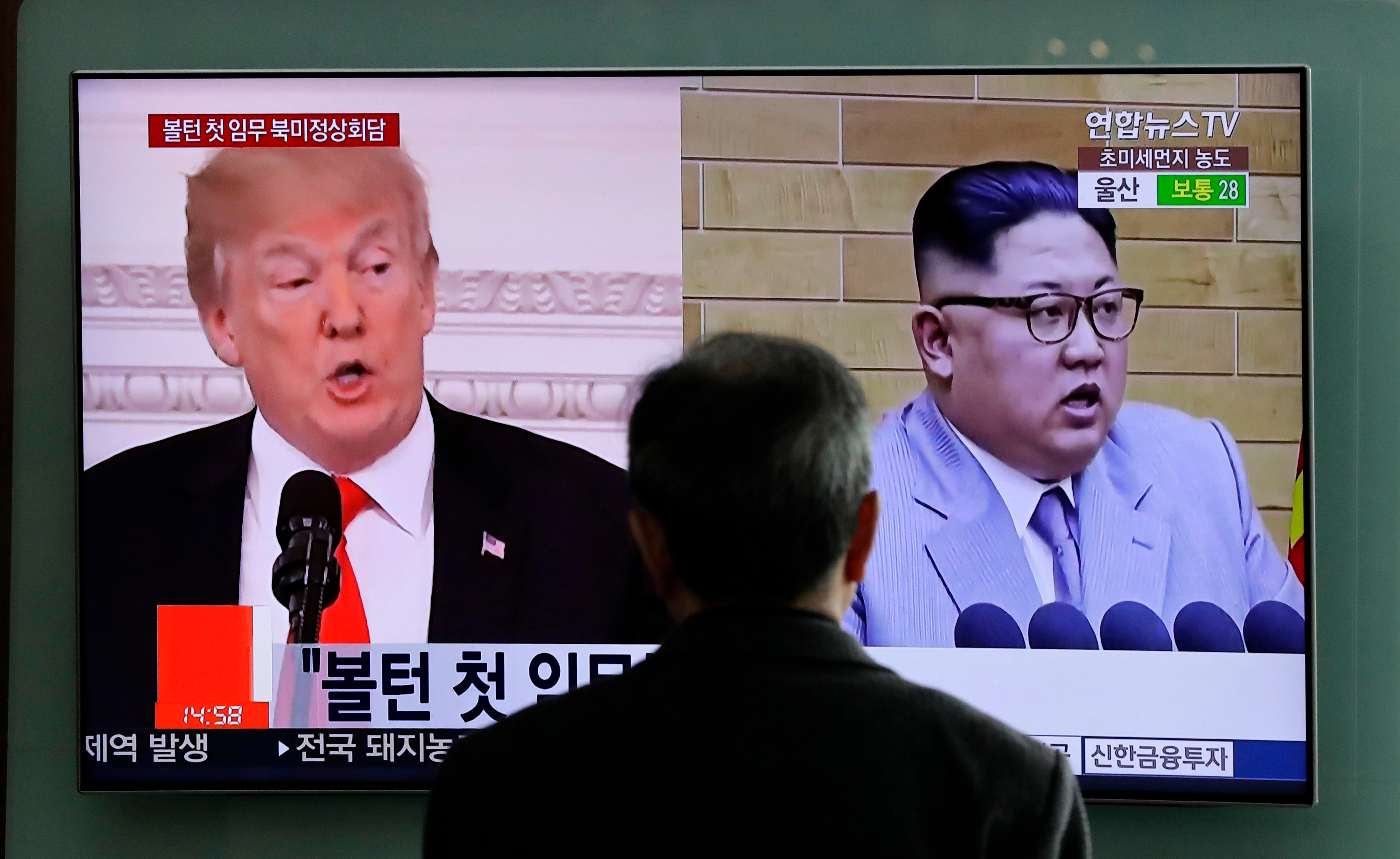
By HEATHER HOLLINSWORTH and DEEPTI HAJELA
Associated Press
New York held a ticker-tape parade Wednesday for the health care workers and others who helped the city pull through the darkest days of COVID-19, while authorities in Missouri struggled to beat back a surge blamed on the fast-spreading delta variant and deep resistance to getting vaccinated.
The split-screen images could be a glimpse of what public health experts say may lie ahead for the U.S. even as the economy opens up again and life gets back to something close to normal: outbreaks in corners of the country with low vaccination rates.
“We’ve got a lot to appreciate, because we’re well underway in our recovery,” declared New York Mayor Bill de Blasio, who rode on a parade float with hospital employees down the Canyon of Heroes, the skyscraper-lined stretch of Broadway where astronauts, returning soldiers and championship teams are feted.
In Missouri, meanwhile, the Springfield area has been hit so hard that one hospital had to borrow ventilators over the Fourth of July weekend and begged on social media for help from respiratory therapists, several of whom volunteered from other states. Members of a new federal “surge response team” also began arriving to help suppress the outbreak.
Missouri not only leads the nation in new cases relative to the population, it is also averaging 1,000 cases per day — about the same number as the entire Northeast, including the big cities in New York, New Jersey, Pennsylvania and Massachusetts.
California, with 40 million people, is posting only slightly higher case numbers than Missouri, which has a population of 6 million.
Northeastern states have seen cases, deaths and hospitalizations plummet to almost nothing amid widespread acceptance of the COVID-19 vaccine.
Vermont has gone 26 days with new case numbers in single digits. In Maryland, the governor’s office said every death recorded in June was in an unvaccinated person. New York City, which was the lethal epicenter of the U.S. outbreak in the spring of 2020, when the number of dead peaked at over 800 a day, regularly goes entire days with no reported deaths.
The problem in Missouri, as health experts see it: Just 45% of the state’s residents have received at least one dose of the vaccine, compared with 55% of the U.S. population. Some rural counties near Springfield have vaccination rates in the teens and 20s.
At the same time, the delta variant is fast becoming the predominant strain in the state. Testing of wastewater shows it is spreading from rural areas into more populated places.
Mercy Hospital Springfield reported Tuesday that it had more than 120 patients hospitalized with COVID-19 — the highest total since the pandemic began. Seventeen people died in the latest two-week reporting period in the county that surrounds Springfield, the most since January. None were vaccinated, authorities said.
Erik Frederick, Mercy’s chief administrative officer, said staff members are frustrated knowing that “this is preventable this time” because of the vaccine.
“We try to convince people, but it is almost like you are talking a different language,” he lamented. “There is no way they are going to get a vaccine. Their personal freedom is more important.”
The Mercy system announced Wednesday that it is requiring vaccinations among staff at the hospital in Springfield, as well as at its 29 other hospitals and 900 or so clinics in Kansas, Missouri, Oklahoma and Arkansas. It said about 75% of its more than 40,000 employees are vaccinated.
Missouri also never had a statewide mask mandate. The sentiment against government intervention is so strong that Brian Steele, mayor of the Springfield suburb of Nixa, is facing a recall vote after imposing a mask rule, even though it has long since expired.
At Springfield’s other hospital, Cox South, several patients are in their 20s and 30s, said Ashley Kimberling Casad, vice president of clinical services. She said she had been hopeful when she eyed the COVID-19 numbers in May as she prepared to return from maternity leave.
“I really thought when I came back from maternity leave that, not that COVID would be gone, but that it would just be so manageable. Then all of a sudden it started spiking,” she said, adding that nearly all the virus samples that the hospital is sending for testing are proving to be the delta variant.
Citing the rise in cases, the Springfield school district reinstated its mask requirement for its summer program starting Wednesday.
The contrasting scenes in the U.S. came as the worldwide death toll from COVID-19 closed in on 4 million, by Johns Hopkins University’s count. COVID-19 deaths nationwide are down to around 200 per day from a peak of over 3,400 per day in January.
In New York, those honored at the parade included nurses and doctors, emergency crews, bus drivers and train operators, teachers and utility workers. The crowds along the route were thin, in part because many businesses are still operating remotely.
“What a difference a year makes,” said parade grand marshal Sandra Lindsay, a nurse who was the first person in the country to get a COVID-19 vaccine shot.
“Fifteen months ago, we were in a much different place, but thanks to the heroic efforts of so many — health care workers, first responders, front-line workers, the people who fed us, the people who put their lives on the line, we can’t thank them enough.”



















